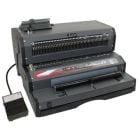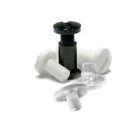Putting Together a Great Sales Proposal
Creating a great sales proposals can be the difference between your company's success or failure. Here are a few tips to get you started.
Starting Out.
For the most part, sales presentations are intended to accomplish three things:
1. To Educate. For all intents and purposes, what you are doing is telling your prospect why he needs you and your services. Here you need to not only look at the past or the present, but let your potential client know why your products or services will be vital to them achieving future goals. You want to appear to have the ability to see the whole picture, to demonstrate need on their part, and solutions on yours.
2. To Sell. And not just your product or service. You want to ensure that you convince your audience that your company is the only one that is going to be able to properly provide solutions. You don't want to lead your prospects to anyone's door but yours.
3. To Justify. Make it clear how your proposal is going to make their investment worthwhile, and when they should start to see results. Charts and graphs are very useful ways to help convey this, and the more colorful and easily understood, the better.
Sections.
Your sales proposal should contain the following sections:
1. Theme and Introduction. In order to ensure that your proposal get read, make sure that your theme is clear and your headline is not too "salesy." You can simply state the reason for your proposal, and how your company is going to help your prospect achieve his or her goals.
2. Current Situation. This is where you demonstrate a clear understanding of your client's need, or in other words, you identify the problem your services intend to solve. You must convey authority in this section without appearing to be pushy or looking like an arrogant know-it-all.
3. Objectives. In this section, you want to allow your client to see how you will be helping his or her business. Don't make a lot or promises, just keep it simple, use examples, and make sure it's clear that your business is the only solution.
4. Approach. Here is where you lay out the details of how you are going to deliver your services. This can be a little tricky, as you want to be clear enough to be understood, but you want to make sure that you aren't give away any proprietary secrets or give them any recommendations on how they would be able to get the job done themselves or elsewhere. This is a good place to include timelines and deliverables.
5. Benefits. Present an exhaustive list of all the improvements your client will see as a result of listing your services. Use plain, clear, non-hyperbolic language, but be sure not to leave any possible benefits out (increased sales, improve productivity, etc.)
6. Costs. A clear and honest estimate of what your project will cost your client. Make sure that you put this section after the Approach and Benefits, so it makes sense to your client. You may not always be able to exactly determine costs, but you can detail the stages of the process so there will be no surprises.
7. Closing Statement. Hit the high points again and remind your client exactly why your company is the best one for the job.
Appearance.
You want to make sure that your sales proposal stands out, so bind it as attractively as you can. There are many options available, such as plastic comb, spiral coil, or even thermal hardcover binding if you really want to impress.









